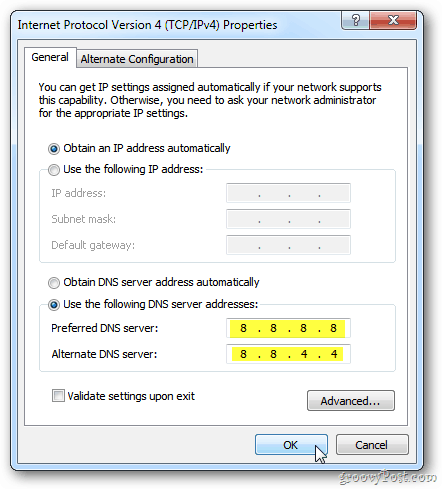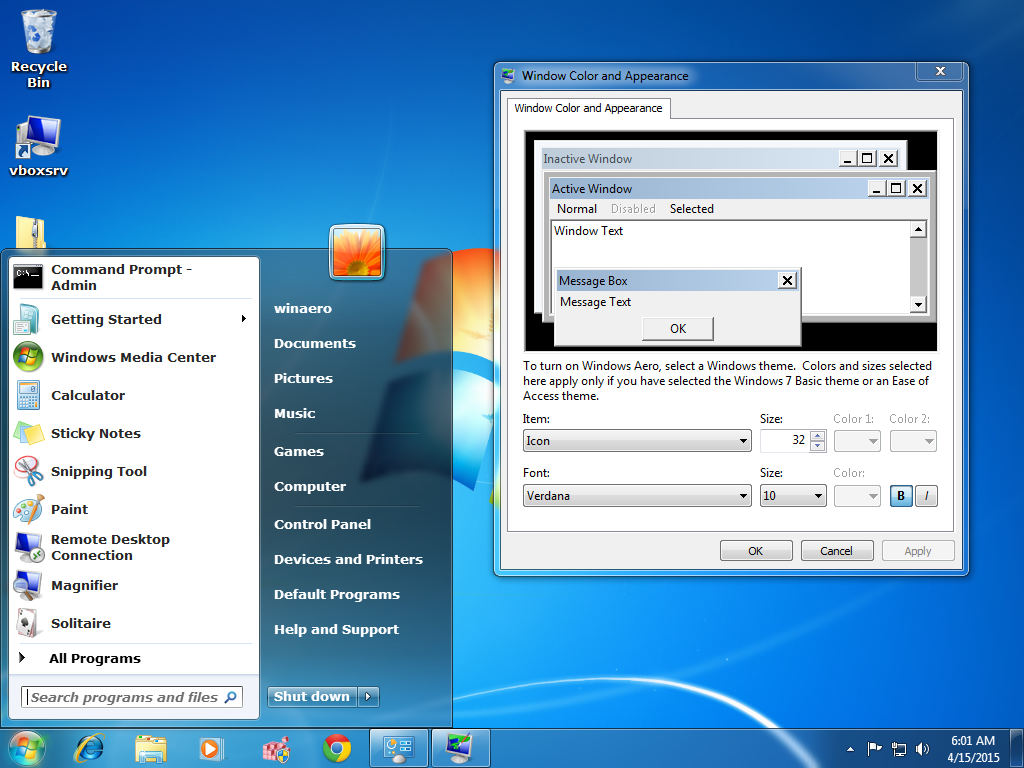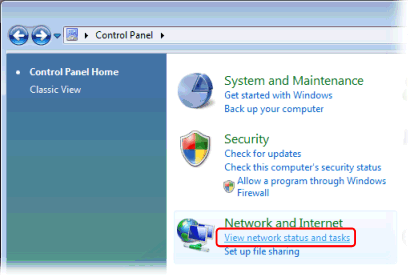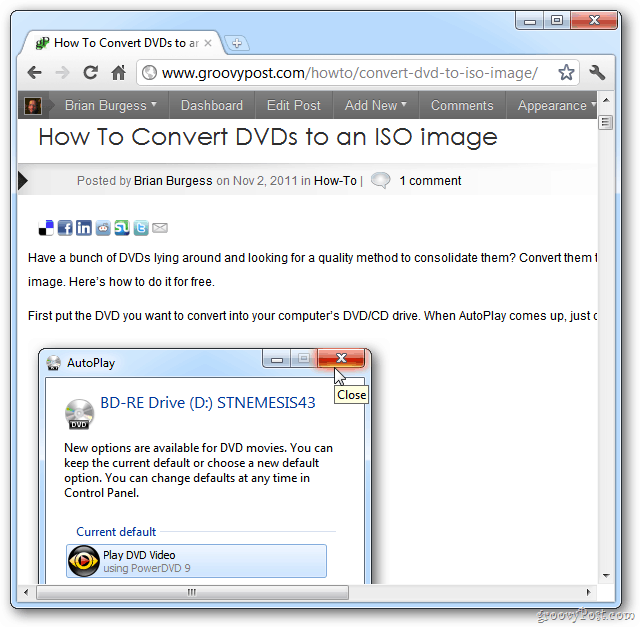Change Dns Windows Vista
What is a DNS?
Network Assistant 1.4.2. Change the DNS server on your system to achieve higher speed, security or privacy in the area wher. Feb 28th 2020, 20:48 GMT. Windows 10 64 bit / Windows 10 / Windows 8. Though this is generally the default - it may just work in your case. The DNS server address would also need to be specific to your scenario. Changing IP information usually requires elevated privileges, so make sure you are running PowerShell with elevated rights - by default Windows Vista and later launch PowerShell without elevating it. An installable version is also available: Change DNS Helper runs on: Windows 10 32/64 bit Windows 8 32/64 bit Windows 7 32/64 bit Windows Vista 32/64 bit Windows XP 32/64 bit file size: 1.5 MB. Changing DNS in Windows Vista Here we'll show you how to manually assign DNS (Domain Name Service) servers for your Internet connection using Windows Vista. Go to the Start Menu and click Control Panel In the Control Panel, under Network and Internet, click View network status and tasks.
A DNS (Domain Name Service) acts like a phonebook for Internet addresses. It's a networked computer system with a massive database of Internet domain names and their corresponding addresses, which is constantly kept up-to-date.

When you make a network request to a domain name, your computer needs to know where on the Internet that domain is located. It gets this information from the DNS. Your computer sends a request to the DNS containing the name of the domain, and the DNS responds with that domain's numeric IP address. Your computer then proceeds to connect to that address.
The process is referred to as domain name resolution: a domain name resolves to its corresponding address.
Your ISP usually provides its own default DNS for its customers, and the settings for this server are automatically configured via DHCP. But you don't have to use your ISP's DNS. There are many publicly available Domain Name Services, and you may want to use one of them instead. In addition to providing an alternative solution to your ISP, services like Cloudflare also encrypt and keep your DNS requests private from your ISP.
Alternate domain name services
Here is a selection of public DNS servers, current as of December 2018. There are two addresses listed for each: primary and a secondary, which acts as a backup if the first address is unavailable.
| DNS Provider | Primary Address | Secondary Address |
|---|---|---|
| Cloudflare IPv4 | 1.1.1.1 | 1.0.0.1 |
| Cloudflare IPv6 | 2606:4700:4700::1111 | 2606:4700:4700::1001 |
| Google Public DNS | 8.8.8.8 | 8.8.4.4 |
| OpenDNS | 208.67.222.222 | 208.67.220.220 |
| Verisign | 64.6.64.6 | 64.6.65.6 |
| DNS.WATCH | 84.200.69.80 | 84.200.70.40 |
| OpenNIC | 50.116.23.211 | 192.99.240.129 |
| Dyn | 216.146.35.35 | 216.146.36.36 |
| DNS Advantage | 156.154.70.1 | 156.154.71.1 |
| SafeDNS | 195.46.39.39 | 195.46.39.40 |
| Comodo Secure DNS | 8.26.56.26 | 8.20.247.20 |
| Norton ConnectSafe | 199.85.126.10 | 199.85.127.10 |
| GreenTeamDNS | 81.218.119.11 | 209.88.198.133 |
| SmartViper | 208.76.50.50 | 208.76.51.51 |
| AlternateDNS | 198.101.242.72 | 23.253.163.53 |
| Yandex.DNS | 77.88.8.8 | 77.88.8.1 |
You may decide to use one of these, or change your DNS to an address provided by your school or your employer's IT department. Make sure you know the address(es) of your new DNS before you proceed.
Configuring your operating system
The steps for changing your computer's DNS settings will depend on what operating system you are running. Use the links below to navigate to the section which applies to you.
Before making any changes to your DNS configuration, we highly recommended writing down your current DNS address information so changs can be reverted if necessary.
NoteIf you cannot change your DNS addresses, you likely don't have the proper permissions to do so. If you have problems, contact your system administrator or IT department for assistance.
The following are step-by-step instructions for changing the DNS settings on Windows, OS X, Linux, and BSD operating systems:
Windows 10
- Open the Control Panel.
- Click View network status and tasks
- Click Change adapter settings on the left portion of the window.
- Double-click the icon for the Internet connection you're using.
- Click the Properties button.
- Click and highlight Internet Protocol Version 4 (TCP/IPv4) and click Properties.
- If not already selected, select the Use the following DNS server addresses option.
- Enter the new DNS addresses and click OK and close out of all other windows.
Windows 8
- Access the Windows desktop screen.
- Press Ctrl+I on the keyboard to open the Settings menu and select the Control Panel option.
- Click the Network and Sharing Center icon.
- Click the Change adapter settings option in the left navigation pane.
- Double-click the icon for the Internet connection you are using. It may be labeled Ethernet if using wired Internet, or Wi-Fi if you're using a wireless connection. If you have multiple connections, make sure not to select the one with the red X. In the Properties or Status window that opens, click the Properties button.
- Select the Internet Protocol Version 4 (TCP/IPv4) option in the list of items on the Properties window and click the Properties button.
- If not already selected, select the Use the following DNS server addresses option.
- Enter the new DNS addresses and click OK and close out of all other windows.
Windows 7
- Open the Control Panel.
- Click View network status and tasks
- Click Change adapter settings on the left portion of the window.
- Double-click the icon for the Internet connection you're using. Often this will be labeled Local Area Connection or the name of your ISP. If you have multiple connections, make sure not to click the one with the red X.
- Click the Properties button.
- Click and highlight Internet Protocol Version 4 (TCP/IPv4) and click Properties.
- If not already selected, select the Use the following DNS server addresses option.
- Enter the new DNS addresses and click OK and close out of all other windows.
Windows Vista
- Open the Control Panel.
- Click View network status and tasks
- Click View status for the network connection.
- Click Properties and Continue.
- Click and highlight Internet Protocol Version 4 (TCP/IPv4) and click Properties.
- If not already selected, select the Use the following DNS server addresses option.
- Enter the new DNS addresses and click OK and close out of all other windows.
Windows XP
- Open the Control Panel.
- In the Control Panel window, double-click the Network Connections icon.
- Double-click the icon for the Internet connection you're using. Often this will be labeled Local Area Connection or the name of your ISP. If you have multiple connections, make sure not to click the one with the red X.
- Click the Properties button.
- Highlight Internet Protocol (TCP/IP) in the connection items list and click the Properties button.
- If not already selected, select the Use the following DNS server addresses option.
- Enter the new DNS addresses and click OK and close out of all other windows.
Windows 98
- Open the Control Panel.
- In the Control Panel window, double-click the Network icon.
- Highlight TCP/IP Ethernet adapter in the connection items list and click the Properties button.
- In the Properties window, click the DNS Configuration tab and select Enable DNS.
- If any DNS server is listed, highlight each and click the Remove button.
- Once no DNS is listed, type in the new addresses and click the Add button.
- Once the new addresses are added, click Ok and close out of all other windows.
macOS
- From the Apple menu in the upper left corner of your screen, select System Preferences.
- From the System Preferences menu, select Network.
- In the Network menu, make sure your correct network device is highlighted on the left pane of the window Wi-Fi, for example. Click Advanced.
- In the advanced settings, click the DNS button to bring up DNS settings.
- In the left pane, you can see your current DNS server addresses. Write these down in case you need to revert your changes later.
- Highlight one of your current DNS addresses, and click the minus ('-') button underneath the left pane to remove the highlighted address from the list. Do this for each of your current DNS addresses.
- Once the list is empty, click the plus ('+') button to add a new empty address (0.0.0.0). Highlight this address and type in a new one. Press Enter when you are done.
- Repeat step 7 for a secondary address, if you are adding one.
- Click OK to save the settings.
- Click Apply to apply your new network settings.
Linux
In Linux, the DNS server addresses are kept in the system file /etc/resolv.conf. (You need superuser privileges to edit this file.)
For instance, to edit this file with the nano text editor, use the command:
(We prefix the command with sudo to run nano with superuser permission.)

In your text editor, you can see the contents of /etc/resolv.conf. Each line that begins with the word nameserver contains a DNS address that is used by your system.
Once you have the file open, follow these steps:
- Make a note of the DNS addresses already listed. You may need this information later if you want to revert your changes.
- Delete any lines beginning with nameserver.
- For each DNS address you want to add, add a line which reads nameserveraddress, where address is the address of the DNS. For instance, in the image below, we are configuring our system to use the primary and secondary Google Public DNS.
- Save the file. In nano, this is Ctrl-O, Enter.
- Exit the text editor. In nano, this is Ctrl-X.
BSD
BSD's resolver uses the same file and format as Linux. Edit /etc/resolv.conf as root and add a nameserveraddress line for each DNS you want to use.
The same is true for macOS X, which a derivative of BSD. If you'd like to change your Mac's DNS addresses directly, edit the nameserver lines in /etc/resolv.conf as the root user.
Additional information
- See the DNS and TCP/IP definitions for further information and related links.
RSS Feed for this tag 17 applications totalLast updated: Feb 27th 2021, 02:27 GMT
QuickSetDNS 1.31
Easily change DNS server settings for accessing the Internet, create and manage multiple profiles,...
Change Dns Windows Vista Free
ChrisPC DNS Switch 4.30
Quickly change the DNS of your network adapters manually, or by choosing from a list of presets, w...
ChrisPC DNS Switch Pro 4.30
Switch between multiple DNS servers and add your own ones without having to go through complicated...
DNS Jumper 2.2
Portable application that helps you choose between different DNS services, input the address of su...
Network Assistant 1.4.2
Change the DNS server on your system to achieve higher speed, security or privacy in the area wher...
ZoneEdit Dyn Updater 2.1
A Domain Name System updater that you can carry with you anywhere in order to quickly synchronize ...
DNS Lock 1.4
Modify your favorite IPv4 DNS server and make sure that it cannot be modified so that you do not e...
Public DNS Server Tool 2.4
Change the DNS server of your network interface card in just a few steps using this approachable a...
Change DNS Helper Portable 1.0
Change the DNS name server of your network adapter to increase the security of online browsing or ...
Change DNS Helper 1.0
Replace the default DNS server used by your network adapter with public services and perform vario...

Smart DNS Changer & MAC Address Changer 4.7.2.0
With this application, you can change the DNS or MAC address on your system, to ensure your childr...
MO DNS Changer 1.0.5
A lightweight and easy to handle application that you can use in order to easily modify the domain...
DNS Changer 1.0.0.0
A lightweight and easy to use application whose main purpose is to provide you with the ability of...
DnsChanger 2.0
Lightweight and portable software application that can easily change DNS servers quickly from a li...
Rufus
TeamViewer
Zoom Client for Meetings
CyberLink PowerDirector
Change Dns Windows Vista Download
SUMo
Wise Folder Hider
Driver Booster PRO
Skype
Microsoft Teams
- Skype
- Microsoft Teams
- Rufus
- TeamViewer
- Zoom Client for Meetings
- CyberLink PowerDirector
- SUMo
- Wise Folder Hider
- Driver Booster PRO

DNSResolver 1.2.2
Renews your DNS settings with a single click
tFastDNS 1.0
A simple tool that allows you to change DNS faster
DNS Changer 1.1
Changing Dns Server Windows 10
Lightweight and simple application for changing Windows DNS settings seamlessly, which does not re...